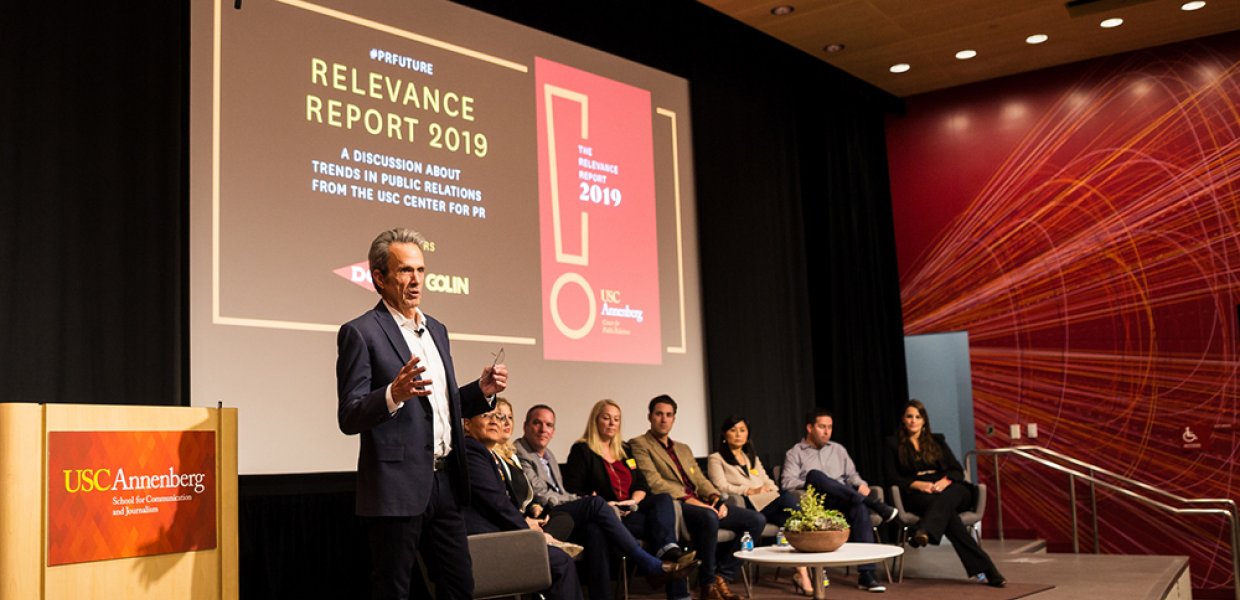Study is featured in the 2019 Relevance Report available for download Nov. 1.
The use of branded content — paid stories in print, broadcast and online media — is on the rise in the public relations industry, according to a study conducted by the USC Annenberg Center for Public Relations. The details of the study are featured in one of 35 essays about trends in the public relations industry published in the 2019 Relevance Report, a free publication available for download beginning Nov. 1 here.
The center’s annual Relevance Report is a collection of essays from professionals and academics that identify emerging issues, examine current strategies and forecast future trends. Contributions in the 2019 collection include thought pieces on healthcare technology, retailing, brands, inclusion and diversity, and the future of business communication.
The essay “What Is Branded Content and Is It Ethical?” is based on a 2018 survey of communications professionals that showed the prevalence of the practice in the PR industry, with 74.5 percent of respondents stating they use some branded content in their campaigns. More than 80 percent perceive it as a somewhat or very effective PR strategy, and two-thirds of the respondents expect increases in budgets for branded content in the next 12 months.
Although the FTC provides guidelines for native advertising, there is not a standard definition of branded content for the public relations industry to follow. As a result, this practice is largely unregulated and could possibly be deceptive or misleading to consumers. Almost half (48.5 percent) of PR professionals think it is somewhat or very difficult for consumers to distinguish between branded content and editorial content, but only 14.8 percent have ethical concerns regarding the use of branded content by the industry.
“Because of evolving media revenue models, branded content has climbed over the wall that typically separated advertising and editorial,” said Fred Cook, director of the Center for Public Relations. “This blurring effect may create an ethical issue when consumers are unable to distinguish between earned and paid content.”
The branded content study led by recent USC Annenberg graduate Taryn Maister surveyed 220 PR professionals working for public relations or communications agencies, private companies, nonprofits and consultancies. The full research findings are published in the 2019 Relevance Report.
Academics interested in obtaining print copies of the 2019 Relevance Report for journalism classes and groups can contact usccpr@usc.edu with requests. For more information, please visit their page here.
About the USC Center for Public Relations
Based at the USC Annenberg School for Communication and Journalism, the mission of the USC Center for Public Relations (CPR) is to connect corporations, agencies, academics and students to define the future of our industry and to develop those who will shape it. Signature initiatives include the Global Communications Report, USC Annenberg’s Kenneth Owler Smith Symposium, and the Relevance Report. Follow CPR on social media: @Center4PR and #PRFUTURE.
